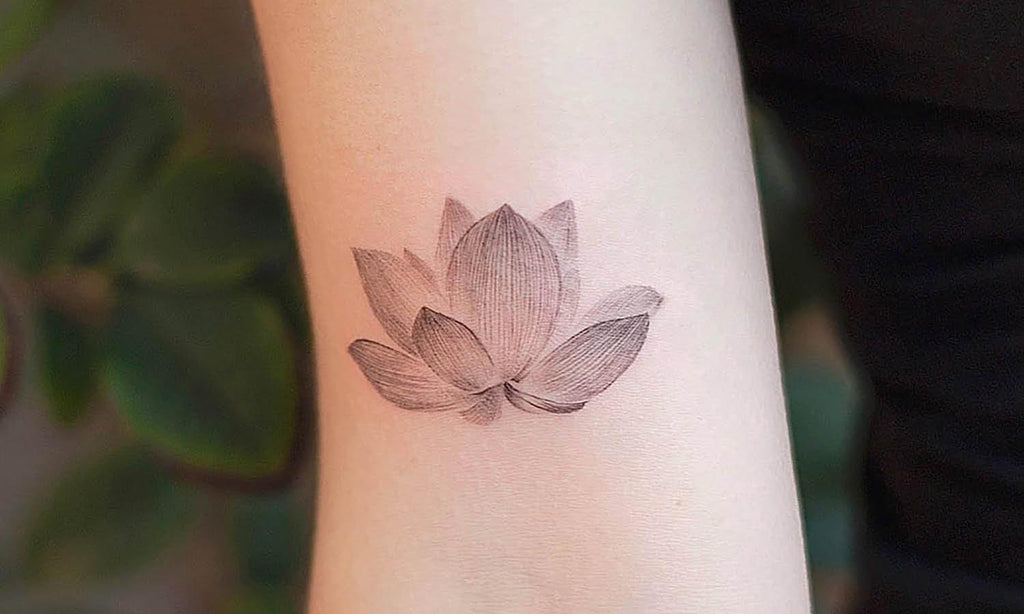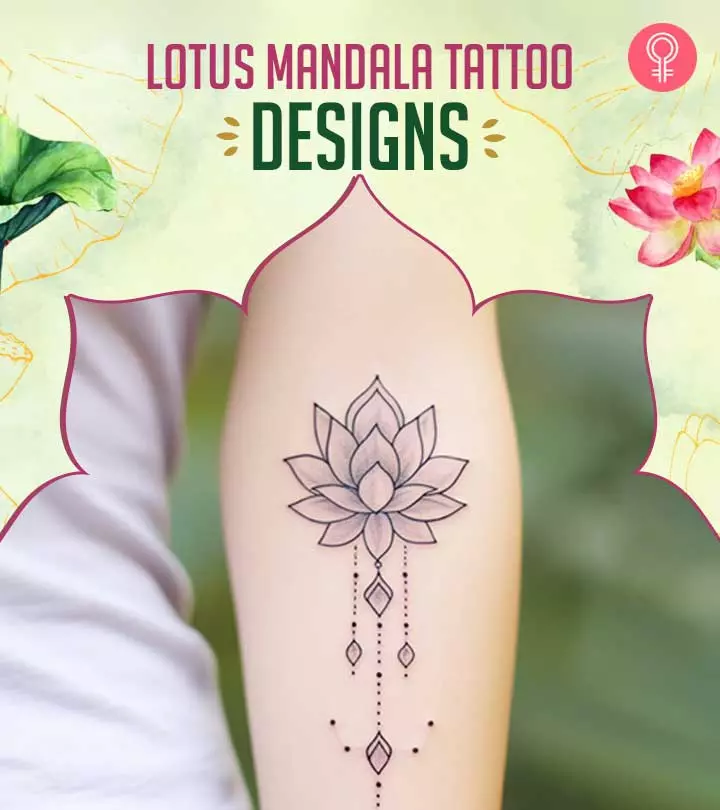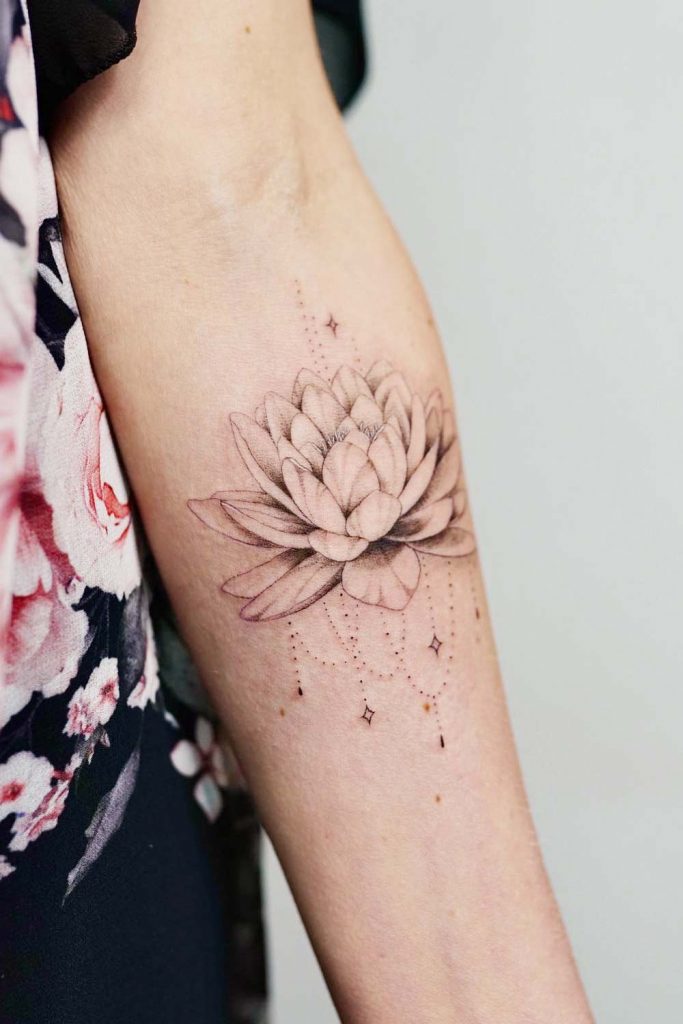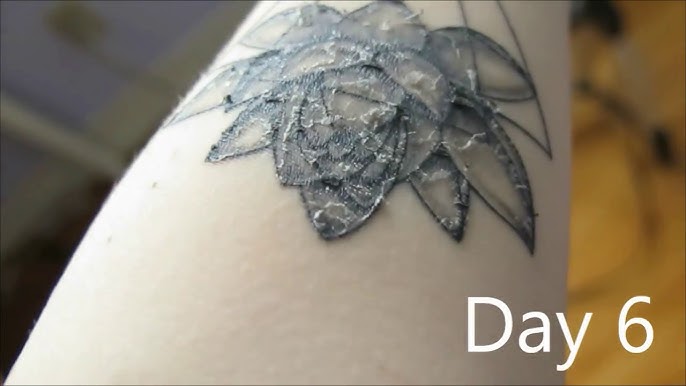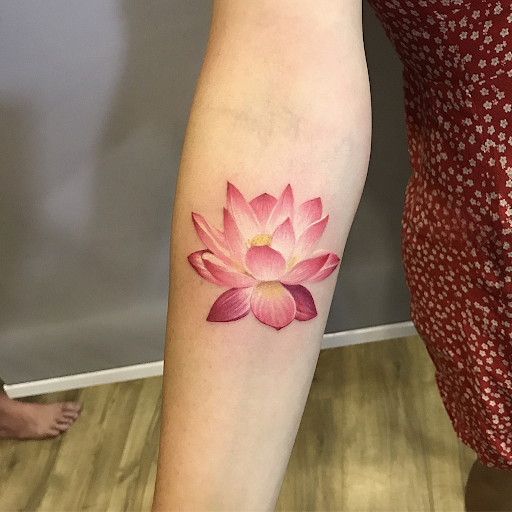Lotus Flower Tattoo Meaning: The Hidden Psychology and Science Behind Modern Designs
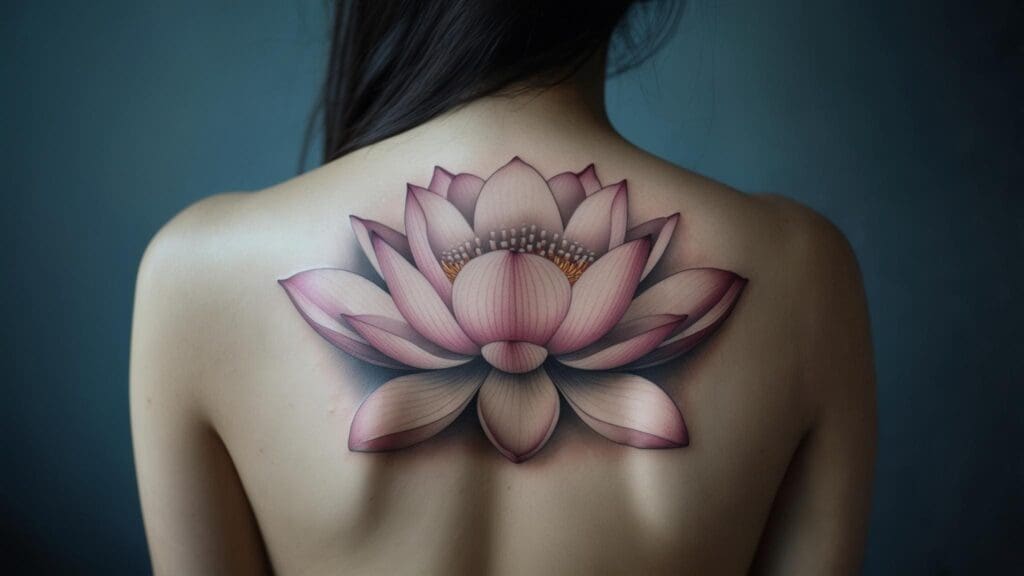
Source: kreafolk.com
From ancient temples to modern tattoo studios, the lotus flower tattoo has transcended cultural boundaries to become one of the most requested designs worldwide. Across civilizations, the lotus flower tattoo has whispered stories of spiritual transformation, resilience, and beauty, evolving from simple religious symbolism into sophisticated psychological tools that activate specific neural pathways and support personal healing journeys.
Table of Contents
- The Psychological Architecture of Lotus Symbolism
- The Biomimetic Design Revolution in Lotus Tattoos
- Lotus Tattoos as Wellness Technology
- Contemporary Identity Expression Through Lotus Modification
- The Ritualistic and Ceremonial Dimensions of Lotus Tattoos
- The Quantum Physics of Lotus Tattoo Meaning
TL;DR
- Modern lotus tattoos function as psychological tools that activate specific neural pathways associated with hope and recovery, making them particularly powerful for trauma processing and life transitions
- Scientific understanding of lotus biology has revolutionized tattoo designs, incorporating microscopic petal structures and seasonal growth patterns that add deeper layers of meaning about resilience and adaptation
- Contemporary lotus tattoos serve as wellness technology, integrating mindfulness practices and therapeutic milestone marking through visual cues and tactile elements
- Today’s lotus designs break traditional boundaries by blending organic imagery with digital elements, gender identity expression, and quantum physics concepts
- These tattoos function as personal ritual objects that document life transitions while connecting individual transformation with collective human experiences
The Psychological Architecture of Lotus Symbolism
Modern lotus flower tattoo meaning extends far beyond spiritual awakening. We’re seeing these designs tap into psychological frameworks of resilience, transformation, and identity reconstruction in ways that would have amazed ancient practitioners. These tattoos resonate with contemporary mental health awareness and personal development movements, creating powerful visual representations of psychological healing and growth.
The fascinating thing about lotus imagery is how it activates specific neural pathways in the brain that are directly linked to hope and recovery mechanisms. When you look at your lotus tattoo, your brain doesn’t just see a pretty flower – it triggers complex neurological responses that can actually support healing processes. The psychological impact becomes particularly pronounced for individuals processing trauma or navigating major life transitions.
Source: vox.com
The Neuroscience of Visual Symbolism in Body Art
Recent research in cognitive psychology reveals how lotus imagery activates specific neural pathways associated with hope and recovery. Visual symbols trigger the brain’s pattern recognition systems, which then activate memory networks associated with positive transformation experiences. When you consistently expose yourself to lotus imagery through tattoos, you’re actually creating neural pathway strengthening that reinforces resilience-building thought patterns.
Brain imaging studies show that viewing lotus symbols increases activity in regions associated with emotional regulation and stress recovery. The meaning of a lotus flower becomes deeply embedded in your neurological responses, creating measurable changes in how your brain processes stress and trauma.
Professional athletes have caught onto this phenomenon. Lionel Messi’s love for his wife, Antonella Roccuzzo, runs so deep that it can’t be expressed in words alone—it needed ink, demonstrating how modern celebrities use symbolic tattoos to represent deep personal transformations and relationships. Messi’s lotus flower tattoo specifically represents his rise from humble beginnings to global superstardom.
Embodied Cognition and Tattoo Placement Psychology
The location of a lotus tattoo on your body creates different psychological associations and impacts. Chest placements link to heart-centered healing processes because the visual proximity to the heart activates emotional processing centers. Your brain makes these connections automatically, strengthening the therapeutic value of the tattoo.
Wrist placements function as daily visual anchors that interrupt negative thought patterns and redirect attention to personal growth goals. Every time you catch a glimpse of that lotus on your wrist, you’re essentially hitting a reset button on anxious or depressive thinking patterns.
The body’s proprioceptive awareness of tattoo locations creates ongoing somatic reminders of the symbolic meaning, reinforcing psychological benefits throughout your day. Understanding the psychological impact of placement becomes even more crucial when considering the pain levels associated with different body areas, as the physical experience of getting the tattoo can enhance the psychological transformation process.
| Tattoo Placement | Psychological Association | Visibility Frequency | Healing Focus |
|---|---|---|---|
| Chest/Heart | Emotional processing, love, compassion | Low (private) | Heart-centered healing |
| Wrist | Daily reminders, mindfulness anchors | High (constant) | Present-moment awareness |
| Shoulder | Strength, burden-carrying, support | Medium (selective) | Personal resilience |
| Back | Past experiences, hidden growth | Low (private) | Subconscious processing |
| Ankle | Grounding, stability, foundation | Low (occasional) | Root chakra work |
Source: shopify.com
Color Psychology in Lotus Design Evolution
Contemporary lotus tattoos incorporate non-traditional color palettes that reflect modern psychological understanding of color impact on mood and cognition. Deep blue lotus designs activate the parasympathetic nervous system, promoting calm and introspective states that support therapeutic work. These aren’t your grandmother’s pink lotus tattoos.
Coral and warm-toned lotus tattoos stimulate creative brain regions and increase motivation for personal transformation projects. Color psychology research shows that non-traditional lotus colors create stronger personal connections because they break expected visual patterns, making your brain pay more attention to the symbol.
Blue lotus flowers are very rare and have a special meaning. Namely, the flower symbolizes the pursuit of wisdom. This requires detachment from desires and emotions, which hinder personal growth, highlighting how specific lotus colors carry distinct psychological and spiritual significance in modern tattoo culture.
Source: pinimg.com
Memory Anchoring Through Symbolic Imagery
Lotus tattoos function as “memory anchors” that help you maintain connection to pivotal moments of personal growth. They leverage the brain’s visual-memory association patterns to create lasting connections between the tattoo image and significant life experiences or therapeutic breakthroughs.
Your brain’s visual cortex creates strong associative links between the lotus image and the emotional state present during significant life moments. Memory anchoring through tattoos provides a reliable trigger for accessing positive mental states and coping strategies during difficult times.
The permanent nature of tattoos strengthens the memory anchor effect because your brain recognizes the commitment level and assigns greater significance to the associated memories. The meaning of a lotus flower tattoo becomes deeply woven into your personal narrative and psychological toolkit.
Cultural Hybridization in Modern Lotus Interpretations
Today’s lotus tattoos blend Eastern spiritual traditions with Western psychological concepts, creating hybrid meanings that reflect globalized identity formation and cross-cultural healing practices. Cultural hybridization in lotus tattoos reflects the global integration of healing practices, combining Buddhist mindfulness with Western cognitive behavioral therapy concepts.
Modern designs incorporate elements from multiple cultural traditions, creating personalized spiritual frameworks that resonate with contemporary multicultural identities. The blending of Eastern and Western symbolism in lotus tattoos represents a holistic approach to mental wellness that draws from diverse therapeutic traditions.
This cultural fusion approach mirrors the broader trend in tattoo artistry where artists are creating innovative floral designs that blend traditional symbolism with contemporary aesthetics, allowing for more personalized and culturally relevant body art.
East-West Therapeutic Integration
Modern lotus designs often incorporate elements from both Buddhist mindfulness practices and Western cognitive behavioral therapy concepts. Buddhist mindfulness elements in lotus tattoos include meditation focal points and breathing pattern guides that support daily practice. You might see subtle geometric patterns within the petals that serve as visual cues for specific meditation techniques.
Western CBT integration appears through visual cues for thought pattern interruption and cognitive restructuring exercises. The combination creates a comprehensive therapeutic tool that addresses both spiritual and psychological aspects of healing.
A therapy client might choose a lotus design where the stem features subtle breathing pattern guides (representing mindfulness practice) while the petals incorporate geometric patterns that serve as visual cues for cognitive restructuring exercises, creating a tattoo that supports both Eastern meditation and Western therapeutic techniques.
Digital Age Spirituality Symbols
Social media has transformed lotus tattoos into symbols of digital detox and authentic self-expression, countering the superficiality of online personas. Lotus tattoos increasingly symbolize digital wellness choices, representing boundaries between online and offline spiritual practices.
The permanent nature of tattoos contrasts with the temporary nature of digital content, emphasizing lasting personal transformation over fleeting social media engagement. Modern lotus designs often incorporate “unplugged” elements that visually represent the choice to disconnect from digital distractions for spiritual growth.
Biographical Storytelling Through Lotus Imagery
Contemporary lotus tattoos serve as visual autobiographies, with specific design elements representing different life chapters, challenges overcome, and future aspirations. Each design element within a lotus tattoo can represent specific life events, creating a visual timeline of personal development and transformation.
Biographical lotus tattoos often incorporate symbolic elements that reference career changes, relationship milestones, or recovery achievements. The storytelling aspect of these tattoos provides ongoing motivation for continued growth by visually representing progress already made. The meaning of lotus tattoo becomes deeply personal and uniquely yours.
Progressive Design Narratives
Multi-session lotus tattoos that evolve over time mirror your ongoing personal development, with new elements added to represent continued growth and learning. Progressive lotus designs begin with basic elements and add complexity over time, reflecting the gradual nature of personal growth and self-discovery.
Each addition to the tattoo marks a significant milestone or breakthrough, creating a visual record of therapeutic progress and life achievements. The ongoing nature of progressive designs maintains engagement with the tattoo’s meaning and prevents the symbol from becoming psychologically stagnant.
Source: fbsbx.com
The Biomimetic Design Revolution in Lotus Tattoos
Scientific understanding of lotus flower biology has inspired tattoo designs that incorporate actual botanical accuracy, creating deeper connections between you and nature’s engineering marvels. Advanced tattoo techniques now allow artists to replicate microscopic lotus structures, creating designs that honor the flower’s remarkable biological properties.
Understanding actual lotus biology provides rich symbolism for tattoos marking specific life transitions and personal resilience building. The scientific marvel of the lotus adds another layer of fascination to its tattoo symbolism. Botanically unique, the lotus possesses an extraordinary property known as superhydrophobicity—the ability to remain pristine and dry despite growing in muddy environments, demonstrating how modern tattoo artists incorporate actual biological properties into symbolic designs.
The lotus tattoo meaning becomes richer when you understand the actual science behind the flower’s remarkable properties.
Microscopic Beauty Translation to Skin Art
Advanced tattoo techniques now allow artists to replicate the microscopic structures of lotus petals and leaves, creating designs that honor the flower’s remarkable self-cleaning properties and water resistance. Microscopic lotus structures include specialized surface textures that repel water and contaminants, providing rich metaphorical content for emotional boundary setting.
Advanced tattooing techniques can now reproduce the intricate cellular patterns found in lotus petals, adding scientific accuracy to spiritual symbolism. The self-cleaning properties of lotus leaves translate directly to tattoo meanings about maintaining personal integrity in toxic environments.
Source: researchgate.net
Biomimetic Symbolism in Personal Resilience
The lotus leaf’s ability to repel water and stay clean becomes a powerful metaphor for maintaining personal boundaries and emotional protection in toxic environments. The lotus leaf’s micro-structure creates a surface that cannot be penetrated by water or dirt, symbolizing impermeable emotional boundaries.
Biomimetic lotus tattoos incorporate actual leaf surface patterns that represent your ability to remain unaffected by negative influences. The scientific accuracy of these designs adds credibility to the metaphorical meaning, grounding spiritual concepts in observable natural phenomena.
Structural Engineering as Life Philosophy
The lotus stem’s hollow structure that provides buoyancy translates to tattoo designs representing the strength found in vulnerability and the power of internal emptiness in Eastern philosophy. The hollow lotus stem structure provides buoyancy while using minimal material, representing efficient strength and resourcefulness.
Tattoo designs incorporating stem cross-sections visually represent the concept that internal space and vulnerability can provide structural support. The engineering principle of hollow strength translates to life philosophy about finding power through openness and emotional availability.
Seasonal Lotus Cycles and Life Transitions
Understanding the lotus’s actual growth patterns and seasonal behaviors provides rich symbolism for tattoos marking specific life transitions, career changes, or relationship milestones. Lotus flowers follow specific seasonal patterns that mirror human life transitions, providing accurate timing metaphors for personal growth.
The biological requirements for lotus blooming translate to tattoo meanings about patience, environmental conditions, and readiness for change. Understanding actual lotus life cycles adds depth to traditional transformation symbolism by grounding it in observable natural processes.
A career counselor might choose a lotus design that incorporates the flower’s seasonal dormancy period to represent her own transition from corporate law to therapeutic practice, with the dormant bulb symbolizing the necessary rest period before her professional rebirth as a healer.
Dormancy Period Symbolism
The lotus’s winter dormancy phase offers powerful imagery for tattoos representing necessary rest periods, depression recovery, or intentional life pauses before major changes. Lotus dormancy is a necessary biological process that enables future blooming, validating rest periods as essential for personal growth.
Dormancy phase tattoos can represent depression recovery by showing that inactive periods are natural preparation for renewed growth. The biological accuracy of dormancy symbolism provides comfort for individuals experiencing life pauses or career transitions.
Emergence Timing and Personal Readiness
The precise environmental conditions required for lotus blooming translate to tattoo meanings about patience, timing, and waiting for the right moment to reveal your true potential. Lotus flowers require specific water temperature, light conditions, and nutrient levels before blooming, representing the complexity of personal readiness.
Emergence timing tattoos help you understand that personal transformation cannot be forced and requires proper environmental conditions. The biological precision of lotus blooming provides a framework for evaluating whether conditions are right for major life changes.
Source: earth.com
Root System Strength Metaphors
The extensive underwater root system of lotus plants provides symbolism for hidden inner work, therapy processes, and the unseen foundations of personal growth. Lotus root systems extend far beyond what’s visible above water, representing the extensive inner work required for personal transformation.
Root system tattoos symbolize therapy processes, meditation practices, and other invisible foundation-building activities. The biological reality of lotus root strength provides validation for the time and energy invested in unseen personal development work.
Lotus Tattoos as Wellness Technology
Modern lotus tattoos function as personal wellness tools, incorporating elements of mindfulness practice, therapeutic reminder systems, and somatic healing approaches that go beyond decorative body art. Lotus tattoos designed with mindfulness practices serve as constant meditation anchors that help maintain present-moment awareness throughout daily activities.
These wellness-focused designs incorporate therapeutic milestone marking and somatic healing approaches that support ongoing recovery processes. The lotus flower tattoo meaning expands to include functional therapeutic applications that support daily mental health maintenance.
Source: pinimg.com
Mindfulness Integration Through Body Art
Lotus tattoos designed with mindfulness practices in mind serve as constant meditation anchors, helping you maintain present-moment awareness and emotional regulation throughout daily activities. Meditation anchor tattoos provide consistent visual focal points that interrupt anxious thought patterns and redirect attention to present-moment awareness.
The permanent placement of mindfulness cues on your body ensures accessibility to grounding techniques regardless of external circumstances. Lotus designs incorporating meditation elements create automatic triggers for breathing regulation and stress response management.
Contemporary tattoo artists are revolutionizing floral designs by incorporating therapeutic elements, as “Brooklyn-based tattoo artist Tiaret Mitchell, who studies floral symbolism and regularly incorporates blooms into their work, believes these tattoos are popular because of the deeper meanings some flowers embody” Allure, with Mitchell specifically noting that lotus flowers help people navigate growth and find beauty within transformation.
The wellness aspect of lotus tattoos connects to broader trends in spiritual tattoo designs that serve as daily reminders of personal growth and mindfulness practices, creating body art that functions as both aesthetic enhancement and therapeutic tool.
Breathing Pattern Visual Cues
Lotus petal arrangements can be designed to guide breathing exercises, with the natural spiral patterns helping regulate anxiety and stress responses through visual focus techniques. Spiral petal patterns naturally guide eye movement in ways that synchronize with optimal breathing rhythms for anxiety reduction.
Visual breathing cues embedded in lotus designs provide discrete access to stress management techniques in public or professional settings. The mathematical precision of petal arrangements creates consistent timing guides for specific therapeutic breathing exercises.
Tactile Meditation Enhancement
Raised or textured lotus tattoo elements provide tactile stimulation points for grounding exercises and anxiety management, combining Eastern meditation practices with Western sensory therapy approaches. Textured tattoo elements provide tactile grounding points that activate the nervous system’s calming response through gentle pressure stimulation.
Raised lotus designs offer discrete fidgeting alternatives that redirect nervous energy into therapeutic touch patterns. The combination of visual and tactile elements creates multi-sensory meditation tools that enhance traditional mindfulness practices.
Source: etsystatic.com
Therapeutic Milestone Marking
Lotus tattoos increasingly serve as markers for therapeutic breakthroughs, recovery anniversaries, and mental health victories, creating tangible reminders of progress that support continued healing. Milestone marking tattoos create permanent records of therapeutic progress that cannot be lost or forgotten during difficult periods.
Visual progress markers help maintain motivation during challenging phases of recovery by providing concrete evidence of previous successes. The ceremonial aspect of getting milestone tattoos reinforces the significance of therapeutic achievements and personal growth victories. The meaning of a lotus flower tattoo becomes deeply connected to your personal healing journey.
Recovery Journey Documentation
Each lotus bloom or petal can represent different stages of recovery from addiction, trauma, or mental health challenges, creating a visual timeline of healing progress. Individual petals or blooms can mark specific recovery milestones such as sobriety anniversaries, therapy breakthroughs, or medication stabilization.
Visual timeline tattoos help track progress during periods when recovery feels stagnant or when motivation decreases. The artistic beauty of recovery documentation tattoos transforms difficult experiences into meaningful art that celebrates survival and growth.
| Recovery Milestone | Lotus Element | Symbolic Meaning | Timing Consideration |
|---|---|---|---|
| Therapy Start | Closed bud | Beginning of growth process | Initial commitment |
| First Breakthrough | Opening petals | Awareness emerging | 3-6 months |
| Major Insight | Half-bloom | Understanding developing | 6-12 months |
| Behavior Change | Full bloom | Integration complete | 12+ months |
| Sustained Progress | Multiple blooms | Ongoing transformation | Annual additions |
Strength Visualization Techniques
Lotus tattoos designed with specific therapeutic goals help you practice strength visualization exercises, using the image as a focal point for building confidence and resilience. Strength visualization tattoos provide consistent visual anchors for confidence-building exercises and positive affirmation practices.
The lotus imagery naturally supports visualization techniques by representing transformation from difficult circumstances to beautiful outcomes. Therapeutic goal tattoos create accountability systems by making personal development commitments visible and permanent.
The therapeutic benefits of lotus tattoos align with broader trends in mental health tattoo designs that support recovery and personal growth, creating permanent reminders of strength and resilience during challenging times.
Contemporary Identity Expression Through Lotus Modification
Modern lotus tattoos break traditional design boundaries by incorporating contemporary artistic styles, technology references, and personal identity markers that reflect 21st-century values and experiences. Contemporary lotus designs blend organic flower imagery with digital elements and technological metaphors to represent growth in our connected world.
Modern modifications serve as powerful symbols for gender identity exploration and LGBTQ+ community expression through the flower’s natural transformation symbolism. These modifications create unique symbolic languages that speak to current cultural movements and individual identity exploration.
Source: pinimg.com
Digital Age Lotus Interpretations
Contemporary lotus designs blend organic flower imagery with digital elements, circuit patterns, and technological metaphors to represent growth and awakening in our connected world. Cyber-organic fusion designs represent the integration of human consciousness with digital technology, appealing to tech workers and digital natives.
Circuit pattern lotus tattoos symbolize the rewiring of thought patterns and neural pathway development through technological tools and digital therapy. Digital wellness imagery in lotus designs represents conscious choices to balance screen time with real-world spiritual practices.
Cyber-Organic Fusion Symbolism
Lotus petals designed with circuit board patterns represent the integration of human consciousness with digital technology, appealing to individuals working in tech or exploring AI-human relationships. Circuit board petal patterns represent the rewiring of human consciousness through digital tools and technological enhancement.
Cyber-organic lotus designs appeal to individuals who view technology integration as natural evolution rather than artificial enhancement. The fusion symbolism addresses the growing intersection between human consciousness and artificial intelligence development.
A software engineer might choose a lotus design where traditional petals gradually transition into circuit board patterns, representing her journey from nature-disconnected coding work to developing AI applications that support environmental conservation, symbolizing the harmony between technology and natural wisdom.
Social Media Detox Imagery
Lotus designs that incorporate “unplugged” elements or broken screen imagery symbolize digital wellness and the conscious choice to prioritize real-world connections over virtual ones. Unplugged lotus elements visually represent the choice to disconnect from digital validation systems in favor of internal growth.
Broken screen imagery within lotus designs symbolizes breaking free from social media addiction and comparison culture. Digital detox tattoos serve as permanent reminders of commitments to authentic self-expression over curated online personas.
Gender Identity and Lotus Symbolism
Modern lotus tattoos serve as powerful symbols for gender identity exploration and expression, with the flower’s natural androgyny and transformation symbolism resonating with LGBTQ+ communities. The lotus flower’s biological characteristics don’t fit traditional masculine/feminine categories, making it ideal for non-binary identity expression.
Transformation journey lotus tattoos incorporate the flower’s emergence process as metaphor for gender transition and authentic self-revelation. Gender identity lotus designs often incorporate pride colors and community symbols while maintaining the flower’s natural transformation symbolism.
Non-Binary Nature Representation
The lotus flower’s biological characteristics that don’t fit traditional masculine/feminine categories make it an ideal symbol for non-binary identity expression and gender fluidity. Lotus flowers possess both masculine and feminine biological characteristics simultaneously, providing natural validation for non-binary identities.
The flower’s reproductive system doesn’t conform to traditional gender binaries, offering scientific support for gender fluidity concepts. Non-binary lotus tattoos often emphasize the flower’s natural androgyny through color choices and design elements that avoid gendered symbolism.
Source: wixstatic.com
Transformation Journey Marking
Lotus tattoos marking gender transition milestones incorporate the flower’s emergence from mud to bloom as a metaphor for authentic self-revelation and identity actualization. Gender transition lotus tattoos use the emergence process to represent the journey from assigned gender to authentic identity expression.
Transformation milestone tattoos often incorporate transition timeline elements such as hormone therapy start dates or legal name change celebrations. The mud-to-bloom metaphor provides powerful imagery for the difficult but necessary process of revealing authentic gender identity.
The Ritualistic and Ceremonial Dimensions of Lotus Tattoos
Contemporary lotus tattoos serve as personal ritual objects, marking significant life ceremonies and creating sacred space on the body that connects individual transformation with collective human experiences across cultures and generations. Modern lotus tattoos function as permanent certificates of completion for life’s major transitions, replacing traditional coming-of-age ceremonies with personalized body art.
Contemporary designs bridge generational gaps by honoring family heritage while expressing individual identity through modified traditional symbolism. These designs function as permanent ceremonial markers that honor life transitions and spiritual milestones.
Source: stylecraze.com
Rite of Passage Documentation Through Ink
Modern lotus tattoos function as permanent certificates of completion for life’s major transitions, replacing traditional coming-of-age ceremonies with personalized body art that acknowledges individual growth milestones. Rite of passage tattoos provide formal recognition for personal achievements that lack traditional ceremonial acknowledgment in modern society.
Lotus designs specifically honor the transformative nature of major life transitions through symbolic representation of growth and emergence. The permanent nature of tattoo ceremonies creates lasting commitment to the values and identity shifts represented by major life changes.
The pink lotus symbolizes Buddha and the path to spiritual enlightenment. When the pink lotus has bloomed completely open, you have reached Nirvana. This is the main goal of Buddhism, demonstrating how specific lotus colors and bloom stages represent distinct ceremonial achievements and spiritual milestones in modern tattoo practice.
Motherhood Transformation Markers
Lotus designs specifically created to honor the physical and emotional changes of pregnancy and childbirth, with opening petals representing the expansion of identity from individual to caregiver. Motherhood lotus tattoos use opening petal imagery to represent the expansion of identity and capacity that occurs during pregnancy and childbirth.
The biological accuracy of lotus blooming provides appropriate metaphors for the timing and intensity of maternal transformation. Pregnancy transformation tattoos often incorporate birth dates, baby footprints, or other personal elements within the lotus design structure.
Career Metamorphosis Celebrations
Professional reinvention moments captured through lotus imagery that incorporates industry-specific elements, such as medical symbols within petals for healthcare workers or mathematical equations for educators transitioning careers. Career transition lotus tattoos incorporate profession-specific symbols within the traditional flower structure to represent professional identity evolution.
The transformation symbolism of lotus emergence provides appropriate metaphors for the risk and growth involved in career changes. Professional metamorphosis tattoos often mark specific dates such as graduation, certification, or first day in new career fields.
Source: glaminati.com
Ancestral Connection Through Modified Symbolism
Contemporary lotus tattoos bridge generational gaps by honoring family heritage while expressing individual identity, creating visual languages that speak to both traditional values and modern sensibilities. Ancestral connection tattoos blend traditional lotus symbolism with family-specific cultural elements to honor heritage while expressing individual identity.
Modified traditional designs allow for cultural appreciation without cultural appropriation by incorporating personal family history and contemporary interpretation. Generational bridge tattoos often include elements that represent both inherited wisdom and personal growth beyond family patterns.
Immigration Story Integration
Lotus designs that incorporate elements from both homeland and adopted country cultures, representing the blooming of bicultural identity and the strength found in navigating multiple cultural expectations. Immigration lotus tattoos incorporate visual elements from both origin and destination cultures to represent the complexity of bicultural identity.
The lotus emergence metaphor provides powerful imagery for the growth and adaptation required during immigration and cultural integration. Bicultural identity tattoos often use color schemes, patterns, or symbols that reference multiple cultural traditions within a unified lotus design.
Family Trauma Healing Representations
Lotus tattoos designed to break generational cycles of trauma, with withered or damaged lower petals representing inherited pain and pristine upper blooms symbolizing conscious healing choices. Generational trauma lotus tattoos use contrasting petal conditions to represent the difference between inherited pain and conscious healing choices.
The biological accuracy of lotus regeneration provides hope for breaking negative family patterns through personal growth and therapeutic work. Family healing tattoos often incorporate specific symbols or dates that represent the decision to pursue different patterns than previous generations.
The Quantum Physics of Lotus Tattoo Meaning
Cutting-edge scientific concepts from quantum mechanics and consciousness research provide new frameworks for understanding lotus tattoo symbolism, particularly around concepts of observer effect, parallel possibilities, and interconnectedness. Quantum physics principles translate to lotus tattoos as tools for manifesting desired life changes through focused intention and visual reinforcement.
Entanglement theory and holographic universe concepts inspire lotus designs that represent deep human connections and the interconnected nature of consciousness. These advanced scientific principles add sophisticated layers of meaning to traditional spiritual symbolism.
Source: ssl-images-amazon.com
Observer Effect and Personal Reality Creation
The quantum physics principle that observation changes reality translates to lotus tattoos as tools for manifesting desired life changes through focused intention and visual reinforcement. Observer effect lotus tattoos function as constant observation tools that theoretically influence personal reality through focused attention and intention.
The quantum principle that consciousness affects reality provides scientific backing for the transformative power of symbolic imagery and visual meditation. Reality creation tattoos often incorporate mathematical symbols or quantum physics references alongside traditional lotus imagery to represent conscious reality manipulation.
Consciousness Collapse Visualization
Lotus designs that represent the moment when infinite possibilities collapse into singular reality, often used by individuals making major life decisions or career pivots. Consciousness collapse tattoos represent the quantum moment when multiple life possibilities resolve into single chosen reality through decision-making.
The visual representation of possibility collapse helps you commit to specific life paths by acknowledging the significance of choice moments. Decision-making lotus tattoos often incorporate branching or converging design elements that represent the narrowing of infinite possibilities into chosen reality.
Probability Wave Petal Arrangements
Mathematical spiral patterns within lotus petals that reference quantum probability distributions, appealing to scientists, mathematicians, and philosophers exploring consciousness studies. Probability wave tattoos incorporate mathematical patterns that represent the quantum mechanical description of reality before observation collapses possibilities.
The spiral arrangements in lotus petals naturally mirror mathematical probability distributions found in quantum mechanics equations. Scientific accuracy in these designs appeals to individuals working in physics, mathematics, or consciousness research fields.
Source: instagram.com
Entanglement Theory and Relationship Dynamics
Quantum entanglement concepts inspire lotus tattoos that represent deep human connections, soul mate relationships, and the mysterious ways individuals remain energetically linked across distance and time. Entanglement lotus tattoos represent the quantum mechanical principle that connected particles remain linked regardless of physical distance.
The scientific concept of non-local connection provides framework for understanding deep human relationships and intuitive communication experiences. Relationship dynamics tattoos often incorporate paired or mirrored lotus elements that represent the mysterious connections between closely bonded individuals.
Non-Local Connection Symbolism
Paired lotus designs where changes to one flower’s appearance theoretically affect its companion piece, worn by couples or close friends to represent unbreakable bonds. Non-local connection tattoos represent the quantum entanglement principle that connected systems remain linked regardless of physical separation.
Paired lotus designs often incorporate complementary elements that complete each other when the wearers are together. The scientific accuracy of entanglement theory provides sophisticated framework for understanding and representing deep human connections.
Superposition State Representations
Lotus tattoos designed to exist in multiple visual states simultaneously, appearing different from various angles to represent the complexity of human identity and the multiplicity of self. Superposition tattoos use optical illusions and angle-dependent imagery to represent the quantum principle of existing in multiple states simultaneously.
The visual complexity of these designs reflects the quantum mechanical understanding that reality exists in multiple possibilities until observed. Multiple identity tattoos appeal to individuals who experience their personality or identity as complex and multifaceted rather than singular.
Holographic Universe Integration
The holographic principle from theoretical physics influences lotus tattoos that contain fractal patterns, suggesting that each part contains information about the whole, reflecting ancient spiritual concepts through modern scientific understanding. Holographic principle tattoos incorporate fractal patterns where each section contains information about the complete design structure.
The scientific concept that each part contains the whole provides modern validation for ancient spiritual teachings about interconnectedness. Fractal lotus designs appeal to individuals interested in the intersection between cutting-edge physics and traditional spiritual wisdom.
Fractal Consciousness Mapping
Lotus designs where each petal contains a smaller version of the complete flower, representing how individual consciousness reflects universal consciousness patterns. Fractal consciousness tattoos use mathematical self-similarity to represent the spiritual concept that individual awareness reflects universal consciousness.
The infinite regression of fractal patterns provides visual representation of the holographic principle that each part contains complete information. Self-similar lotus designs create meditation focal points for contemplating the relationship between individual identity and universal consciousness.
Source: redbubble.net
How Tattoo Generator IQ can help you create your meaningful lotus design: The complexity and personal significance of lotus tattoo symbolism makes the design process particularly challenging. Our AI-powered platform excels at helping you explore the nuanced meanings discussed above by generating multiple design variations that incorporate both traditional and contemporary elements. Whether you’re drawn to the psychological architecture of resilience symbolism, the biomimetic beauty of actual lotus structures, or the quantum physics aspects of consciousness representation, our platform can help you visualize how these concepts translate into stunning, personalized tattoo art. The high-resolution outputs and artist-ready references ensure that your chosen tattoo artist can capture the sophisticated symbolism and detailed elements that make modern lotus tattoos so meaningful.
When considering the investment in such a meaningful design, understanding tattoo pricing factors becomes essential for planning your lotus tattoo journey, ensuring you can work with skilled artists who understand the intricate symbolism and technical requirements of these sophisticated designs.
Final Thoughts
The evolution of lotus flower tattoo meaning reflects our growing understanding of psychology, biology, and quantum physics, creating opportunities for deeply personal and scientifically grounded body art. Modern lotus tattoos function as sophisticated wellness tools that activate specific neural pathways associated with hope and recovery, making them particularly powerful for trauma processing and life transitions.
Your lotus tattoo can incorporate mindfulness practices, therapeutic milestone marking, and even quantum physics principles that resonate with your personal worldview. The integration of psychology, biology, and quantum physics in lotus symbolism provides multiple layers of meaning that can evolve with your understanding and life experience.
Whether you choose biomimetic accuracy, psychological anchoring, or quantum consciousness representation, your lotus tattoo becomes a permanent reminder of your commitment to personal transformation and authentic self-expression. Choosing elements that resonate with your specific worldview and growth goals ensures that your lotus tattoo remains personally meaningful and therapeutically valuable throughout your life.
Pre-Design Consultation Checklist
- ☐ Identify primary symbolic meaning (psychological, spiritual, or scientific)
- ☐ Determine placement based on visibility and psychological impact
- ☐ Choose color palette aligned with intended therapeutic goals
- ☐ Select size appropriate for detail level and symbolic complexity
- ☐ Research artist specialization in botanical or symbolic work
- ☐ Plan for potential progressive additions over time
- ☐ Consider integration with existing tattoos or future plans
- ☐ Evaluate pain tolerance for chosen placement area
- ☐ Budget for high-quality execution of detailed design
- ☐ Schedule consultation 2-3 weeks before tattoo appointment
| Lotus Design Style | Complexity Level | Session Time | Healing Period | Symbolic Focus |
|---|---|---|---|---|
| Minimalist Line Work | Low | 2-3 hours | 2-3 weeks | Essential transformation |
| Biomimetic Detail | High | 6-8 hours | 4-6 weeks | Scientific accuracy |
| Watercolor Fusion | Medium | 4-5 hours | 3-4 weeks | Emotional expression |
| Geometric Integration | Medium-High | 5-7 hours | 3-5 weeks | Mathematical precision |
| Quantum Physics Elements | Very High | 8-12 hours | 6-8 weeks | Consciousness exploration |
Source: ytimg.com
Source: 1984studio.vn
Source: beehiiv.com

